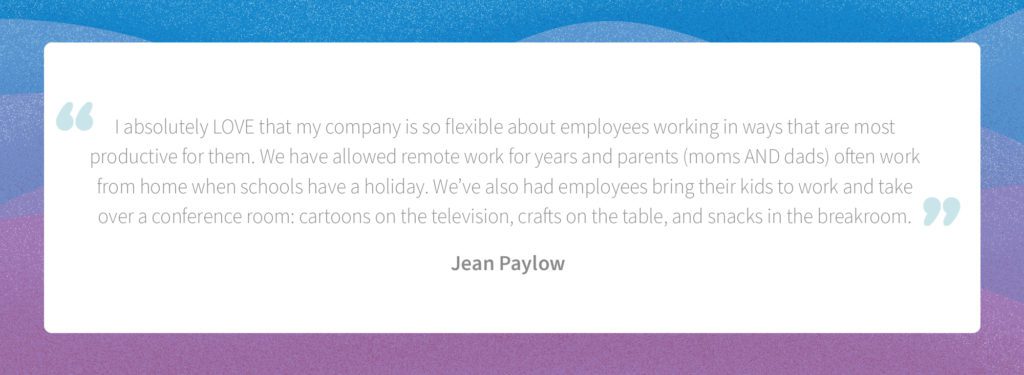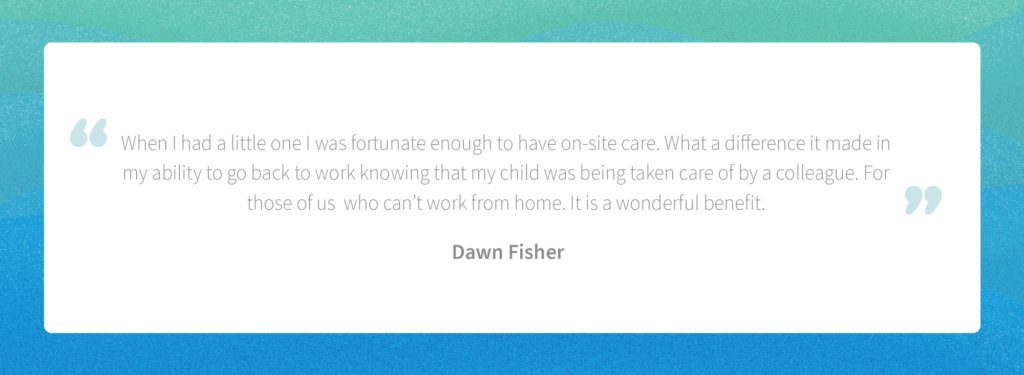Share
Gender inequality isn’t a new problem in the workforce, but the pandemic made many issues more visible. When schools closed, significantly more women than men stepped away from work to focus on childcare and homeschooling.
At the height of the early pandemic (September 2020), around 600,000 more women left their jobs than men (source: NPR)
Pandemic or not, women have always taken a bigger share of housework and childcare. Since women are more likely to prioritize family over career, those choices naturally result in resume gaps and missed opportunities.
70% of female workers have kids under 18 (source: Forbes)
Making up such a large portion of the workforce, how can HR better support and reting working mothers, including new mothers and mothers returning to the workforce? Maternity leave policies and other support programs can improve overall recruitment and retention. When you take better care of the mothers in your workforce, you can improve the whole company culture.
Learn more about the problems mothers face in the workplace and what actionable HR solutions can help ease their burdens.
Problems working mothers face in the workplace
Pregnancy and motherhood require employees to adjust their work-life balance. Here are just a few of the areas where problems tend to arise.
Child care
Daycare is expensive. It’s also often difficult to find openings, especially at the last moment. Many childcare facilities have long waitlists, and the more affordable alternatives might leave parents with safety concerns.
A daycare’s hours of operation might not always align with your company’s default work schedules, especially at the start and end of each day, as well as holidays. When kids are sick or out of school, parents are forced to either find alternative child care options (expensive and difficult to find) or take sick/vacation/PTO days to stay home.
Mental health
Pregnancy and childbirth are extreme physical and psychological experiences on their own. Postpartum depression is just one of the myriad dips and turns in the bodily and hormonal roller coaster. Additionally, newborns require around-the-clock care, significantly more high-maintenance than your average puppy. As those who adopt can testify, just raising a child is enough to feel like you’re going crazy.
Mothers experience a lot of stress at home and in the workplace. Parenting can make you re-evaluate your priorities. Employees who previously were willing to work overtime and holidays may need more time for their growing obligations at home.
Negative stigma
Culturally, working mothers can find themselves in a professional no-man’s-land. There are stereotypes at each of the two extreme possibilities: some new mothers quit entirely and others seem to work longer hours than ever. In reality, many women would prefer to have a balance, taking care of children without sacrificing all of their professional goals.
Broadly, we tend to expect that many new mothers will become less career-focused as they spend more time on childcare and family obligations. Unfortunately, that expectation can become self-fulfilling as new mothers are left out of the loop on projects and miss out on promotions altogether.
Lack of advancement
Whether it’s a deliberate choice or the snowball effect of other factors, many women find that their careers have stagnated because of motherhood. Some choose to “put their career on hold” for the first few years, and others try to limit their time off to maternity leave. Either way, extended time away from work has lasting professional consequences.
HR solutions designed for working mothers
For your employees who choose to have children, motherhood may need to be addressed as another stage of the employee lifecycle.
Update your parental leave policy
When updating your employee handbook (which should be reviewed frequently), make sure you’re going beyond the bare minimum for parental leave. Improve your retention rates with new mothers and other qualified employees by offering reasonable accommodations. Develop a gradual return to work program to smooth out transitions and minimize the disruption of parental leave.
Flexible hours and hybrid work environments are great for parents whose child care provider has strict drop-off or pick-up times. It is also great for everyone if employees can work remotely when their kids are sick.
Accomodations for new mothers
Most companies cannot provide an on-site daycare for employees, but some accommodations are easier than you might think. A small, unused office can be easily converted into a pumping room to give nursing mothers privacy.
Talk to employees who are mothers to find out what types of accommodations would be most helpful. Small conveniences like closer parking spots are more appreciated than you might think.
Update your benefits plan to appeal to mothers
Health insurance and maternity leave are great, but employees planning to start a family will want to know about other policies and benefits. If you already have an Employee Assistance Program, highlight how those opportunities might help mothers.
Credit toward childcare can help parents cover one of their major expenses. Many of the benefits that appeal to working mothers will also help you attract and retain other employees who value flexibility.
Foster a caring and attentive community
Improving your company culture takes more than a few quick edits in the employee handbook. Fortunately, most employees will appreciate a more supportive and empathetic workplace. Changes to leave policies and flexible hours can benefit everyone.
Communicate how your new changes are part of an effort to support working mothers. Some workers might bristle over concerns of unfairness and special treatment, so make sure that your policies are transparently applied across the board.
HR’s main objective is to make personal connections and be a resource to all employees, especially those in need. Connect new and expectant mothers with internal and external resources, including a group of other parents at the company or supportive organizations in your community.
Create a parental leave handbook
Policies on parental leave are important things to include when creating your employee handbook. Many companies offer parental leave to fathers as well as working mothers, helping to reduce one factor in the uncontrolled gender pay gap.
Develop a plan to re-integrate returning mothers after their maternity leave. Think about how HR should communicate with employees on leave, in moderation at first and then more frequently near the end of leave.
Be understanding and consistent
Writing down your new policies will improve transparency, but make sure you listen to stakeholders throughout the process. Evaluate how policy changes like parental leave might be applicable for employees who aren’t parents, making those benefits accessible to everyone. Provide certainty and clarity in the way you explain new policies and programs to minimize gray areas and confusion.
We asked Netchex clients what their companies did to help working mothers (and parents, in general). Here are a few other the most helpful responses:





Industry news & tips sent straight to your inbox!
Enter your email below to subscribe to industry news, product updates, and tips.
For more information on HR topics, read our HR blog and follow Netchex on social media—Facebook, LinkedIn, and Twitter.
Related articles

Seven Major Post-Election HR Implications for Businesses

HR’s Role in Driving Business Success and Growth

The Benefits and Must-Have Features of Employee Self-Service Portals

